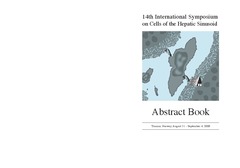Human articular chondrocytes express Chemerin receptor, ChemR23, which conveys inflammatory signalling
Permanent link
https://hdl.handle.net/10037/2975Date
2008-12-17Type
Master thesisMastergradsoppgave
Author
Berg, VivianAbstract
Common features of arthritis include destruction of extracellular matrices in cartilage and bone as a result of chronic inflammation. Cartilage deterioration is generally described as a result from the effect of immune cells and their inflammatory mediators. However, recent reports suggest a role of chondrocytes in the initiation of inflammation in joints, and that they play a pivotal role in the destruction of their own matrix. Chondrocytes express multiple immune receptors and can produce and bind several cytokines, thus rendering them possible targets for therapy. We have demonstrated that serially cultured human articular chondrocytes posses the Chemerin receptor, ChemR23, and that this receptor is also present on chondrocytes in native human cartilage. In cultured chondrocytes we detected mRNA for the Chemerin receptor, and observed that stimulation with Chemerin resulted in phosphorylation of p44/p42 MAPK and Akt. Moreover, the Chemerin stimulation resulted in a marked increase of the pro-inflammatory cytokines IL-6 and IL-8, a modest increase in TNF-α and IL-1β, and marked increase in MMP-2, MMP-3 and MMP-13 in the culture supernatants. These results show that ChemR23 conveys pro-inflammatory signalling and affects MMP production when binding its ligand Chemerin. These observations indicate that ChemR23 takes part in inflammation initiation and cartilage degradation in joint disease.
Publisher
Universitetet i TromsøUniversity of Tromsø
Metadata
Show full item recordCollections
Copyright 2008 The Author(s)
The following license file are associated with this item:
Related items
Showing items related by title, author, creator and subject.
-
Influence of environmental tonicity changes on lipophilic drug release from liposomes
Nikolaisen, Trygg Einar (Mastergradsoppgave; Master thesis, 2018-05-15)Introduction: Liposomes as drug delivery systems has been widely studied as a way to solubilize poorly soluble drugs, reduce side effects of chemotherapeutics and increase circulation time in vivo. Since the first descriptions of liposomes over 60 years ago, they have shown tendencies to shrink and swell when the external environment of the liposomes is altered. This phenomenon has been studied in ... -
Prognostic Impacts of Angiopoietins in NSCLC Tumor Cells and Stroma : VEGF-A Impact Is Strongly Associated with Ang-2
Andersen, Sigve; Dønnem, Tom; Al-Shibli, Khalid Ibrahim; Al-Saad, Samer; Stenvold, Helge; Busund, Lill-Tove; Bremnes, Roy M. (Journal article; Tidsskriftartikkel; Peer reviewed, 2011)Angiopoietins and their receptor Tie-2 are, in concert with VEGF-A, key mediators in angiogenesis. This study evaluates the prognostic impact of all known human angiopoietins (Ang-1, Ang-2 and Ang-4) and their receptor Tie-2, as well as their relation to the prognostic expression of VEGF-A. 335 unselected stage I-IIIA NSCLC-patients were included and tissue samples of respective tumor cells and ... -
14th International Symposium on Cells of the Hepatic Sinusoid
Smedsrød, Bård (Book; Bok, 2008-08-31)Abstract book of the symposium


 English
English norsk
norsk


